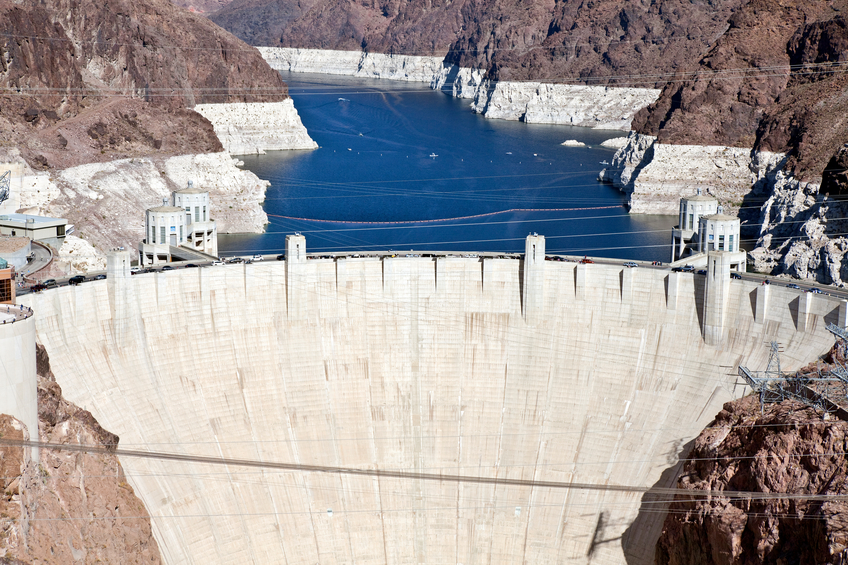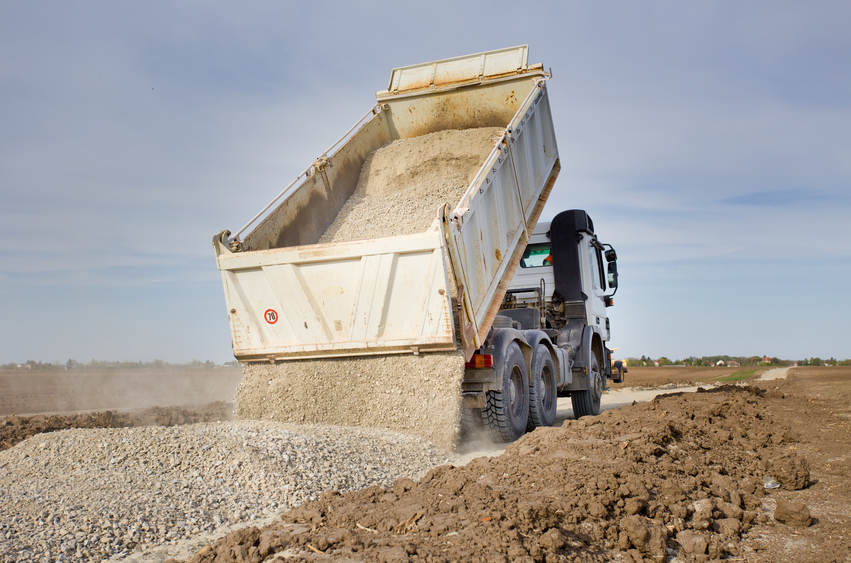Newfoundland and Labrador Geotechnical & Ethics/Regulatory 30 PDH Discount Package
Basic Geotechnical Engineering (G07-003)
Retaining Walls for Non-Geotechnical Engineers (G02-013)
Scour in Cohesive Soils (G07-006)
Selecting and Accommodating Inflow Design Floods for Dams (C04-055)
General Principles of Engineering Ethics and Statutes for Newfoundland and Labrador Professional Engineers (NL3-001)

This online engineering PDH course presents the different methods and procedures for inspecting concrete and masonry dams.
This course introduces the basic principles of concrete and masonry dam inspection. It is estimated that there are about 80,000 dams in the US, many of which are reaching the end of their expected useful lives. With the inventory of aging dams, maintenance and inspection become more critical. At the same time, the useful life of a many newer dams can be extended by regular maintenance of deficiencies which are discovered during routine inspections.
The material presented in this course will provide important background information and is a brief refresher on key terminology used in FEMA dam inspections.
This 7 PDH online course is intended for civil, geotechnical and mechanical engineers as well as others who want to learn more about inspecting concrete and masonry dams.
This P.Eng. continuing education course is intended to provide you with the following specific knowledge and skills:
- Learning about the characteristics of concrete and masonry dams
- Familiarizing with the construction of concrete and masonry dams
- Familiarizing with concrete dam joints, interior features, and water conveyance structures
- Learning about dam inspection techniques
- Familiarizing with crack surveying and surface mapping
- Understanding the causes of deterioration and surface defects
- Learning about displacement and misalignment and differential movement
- Familiarizing with leakage and seepage
- Gaining insight into maintenance concerns and previous repairs
Upon successful completion of the quiz, print your Certificate of Completion instantly. (Note: if you are paying by check or money order, you will be able to print it after we receive your payment.) For your convenience, we will also email it to you. Please note that you can log in to your account at any time to access and print your Certificate of Completion.

In this online engineering PDH course you will learn the background for bearing capacity and settlement analysis; lateral earth pressure on retaining walls, piles and drilled shafts; as well as common soil properties.
Geotechnical engineering is an art form that requires both judgment and experience to arrive at a satisfactory solution. Unlike steel or concrete for instance, soil is quite different. The ground below us ultimately supports all structures and to be successful, the ground must not fail under the applied structural load.
The geotechnical engineer's task is to explore the subsurface conditions at a project site, determine the capacity of the soil to carry the load without collapsing or experiencing intolerable movement and to recommend appropriate foundation alternatives. Geotechnical engineers can arrive at different but equally satisfactory design values even when given the same set of information. Acceptable solutions are dependent upon many soil variables, methods used to predict the results and the practitioner's experience.
This 7 PDH online course is intended for a wide range audience; particularly the non-geotechnical engineers who are interested in gaining a better understanding of the geotechnical engineering field.
This P.Eng. continuing education course is intended to provide you with the following specific knowledge and skills:
- Understanding the common properties of soil and explorations
- Learning the methods of calculating settlement
- Learning the methods to calculate and assign the allowable soil bearing capacity
- Understanding the various types of earth pressure and how each is calculated
- Learning about the total force resulting from lateral pressure and factors of safety
- Learning about piles and drilled shafts
- Learning about soil compaction
In this professional engineering CEU course, you need to review the course document titled, "Basic Geotechnical Engineering".
Upon successful completion of the quiz, print your Certificate of Completion instantly. (Note: if you are paying by check or money order, you will be able to print it after we receive your payment.) For your convenience, we will also email it to you. Please note that you can log in to your account at any time to access and print your Certificate of Completion.

This online engineering PDH course discusses the method of calculating the active earth pressure using the Rankine and Coulomb methods. The course also outlines the method used to calculate the factors of safety for sliding, overturning and bearing capacity, which are three elements required for retaining wall design. A basic example of the calculations for the Rankine method is provided.
Retaining walls are structures that support backfill and allow for a change of grade. For instance a retaining wall can be used to retain fill along a slope or it can be used to support a cut into a slope. Retaining wall structures can be gravity type structures, semi-gravity type structures, cantilever type structures, and counterfort type structures. Walls might be constructed from materials such as fieldstone, reinforced concrete, gabions, reinforced earth, steel and timber. Each of these walls must be designed to resist the external forces applied to the wall from earth pressure, surcharge load, water, earthquake etc.
This 2 PDH online course is intended for a wide range audience and in particular, the non-geotechnical engineer and is not intended as an exhaustive review of the subject. The objective of this course is to familiarize primarily the non-geotechnical engineer with methods for calculating the active earth pressure force against a retaining wall and for assessing its stability with respect to sliding, overturning and bearing capacity.
This P.Eng. continuing education course is intended to provide you with the following specific knowledge and skills:
- Calculating the lateral earth pressure force.
- Calculating factors of safety for overturning, sliding and bearing capacity.
Upon successful completion of the quiz, print your Certificate of Completion instantly. (Note: if you are paying by check or money order, you will be able to print it after we receive your payment.) For your convenience, we will also email it to you. Please note that you can log in to your account at any time to access and print your Certificate of Completion.

This online engineering PDH course provides information on scour in cohesive soils and presents a study through which an erosion testing device that simulates open channel flow on a small scale was developed and tested. In addition, a recommended design approach is provided that can be used for estimating scour for a range of cohesive soils.
Scour in cohesive soils has been a challenge for engineers and designers. Unlike noncohesive soils, practical measurement techniques and well accepted guidance on the scourability of cohesive soils are severely lacking.
This course focuses on two main objectives. The first is to demonstrate a new ex situ erosion testing device (ESTD) that can mimic the near-bed flow of open channels to erode cohesive soils within a specified range of shear stresses. The second objective is to develop a method for estimating the critical shear stress and erosion rates for a limited range of cohesive soils in the context of the Hydraulic Engineering Circular 18 scour framework.
This 7 PDH online course is applicable to geotechnical and civil engineers who are interested in expanding their knowledge on the topic of scour and erosion processes in cohesive soils.
This P.Eng. continuing education course is intended to provide you with the following specific knowledge and skills:
- Familiarizing with cohesive soils and the different factors influencing their behavior
- Understanding the erosion processes in cohesive soils
- Understanding the design, operation, advantages and limitations of the ESTD
- Knowing how the log-law velocity profile is reproduced in the test channel and how boundary shear stress is measured
- Learning about the preparation of soil specimens and soil sample properties
- Learning about the factors affecting erosion and the analytical development of the recommended design relations
- Gaining an overview of future research recommendations in the field
Upon successful completion of the quiz, print your Certificate of Completion instantly. (Note: if you are paying by check or money order, you will be able to print it after we receive your payment.) For your convenience, we will also email it to you. Please note that you can log in to your account at any time to access and print your Certificate of Completion.

This online engineering PDH provides basic guidelines for selecting and accommodating inflow design floods for dams based on current and accepted practices.
Appropriate selection of the Inflow Design Flood is the first step in evaluating and designing a dam to address hydrologic potential failure modes and reduce risks to the public. Existing guidelines of most state and federal agencies for evaluating the hydrologic safety of dams were written in the late 1970s. Since that time, significant technological and analytical advances have led to better watershed and rainfall information, improvements in the analysis of extreme floods, greater sophistication in means to quantify incremental dam failure consequences, and tools for evaluating hydrologic events in a risk-based context.
This 4 PDH online course is applicable to geotechnical and civil engineers, dam owners or regulators, and other technical personnel interested in gaining a better knowledge on inflow design floods for dams.
This P.Eng. continuing education course is intended to provide you with the following specific knowledge and skills:
- Learning about the dam classification system
- Understanding the guidelines for selecting the inflow design flood
- Learning about spillway characteristics (mainly controlled versus uncontrolled)
- Familiarizing with routing the inflow design flood
- Familiarizing with freeboard requirements
- Defining terminology and acronyms associated with the overall scope of the course
Upon successful completion of the quiz, print your Certificate of Completion instantly. (Note: if you are paying by check or money order, you will be able to print it after we receive your payment.) For your convenience, we will also email it to you. Please note that you can log in to your account at any time to access and print your Certificate of Completion.

This online engineering PDH ethics course presents the principles of engineering ethics and statutes for Newfoundland and Labrador Professional Engineers.
Engineering ethics is (1) the study of moral issues and decisions confronting individuals and organizations involved in engineering and (2) the study of related questions about moral conduct, character, ideals and relationships of peoples and organizations involved in technological development (Martin and Schinzinger, Ethics in Engineering).
This course will address the principles of engineering ethics that every engineer is expected to live by when practicing their profession. This course also provides an overview of PEGNL’s general statutes and regulatory laws. It will also present unique ethical studies randomly selected to demonstrate ethical challenges for professional engineers and alternatives to address these challenges.
This 3 PDH online course is applicable to Professional Engineers licensed in Newfoundland and Labrador and who are required to demonstrate continuing professional competency in ethical practice and regulatory learning as a condition of their license renewal.
This online course is intended to provide you with the following specific knowledge and skills:
- Understanding the definition of engineering ethics
- Learning about the important principles of the Engineer’s Professional Responsibility
- Gaining a general overview on PEGNL’s procedure of filing an allegation, its resolution by Registrar and its referral to Complaints Authorization Committee (CAC)
- Familiarizing with PEGNL’s general statutes and regulatory laws
- Understanding professional ethical practices through presenting realistic case studies
Upon successful completion of the quiz, print your Certificate of Completion instantly. (Note: if you are paying by check or money order, you will be able to print it after we receive your payment.) For your convenience, we will also email it to you. Please note that you can log in to your account at any time to access and print your Certificate of Completion.